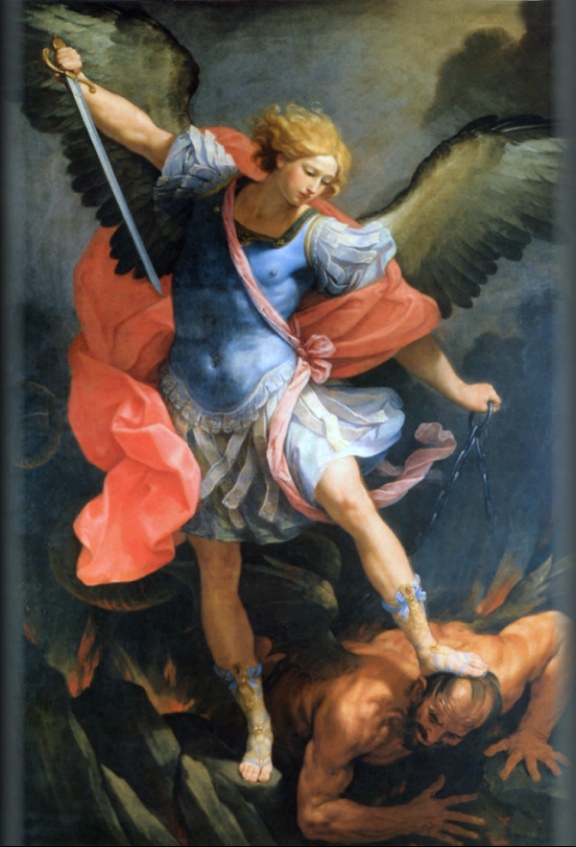St Michael, Archangel, is an unusual saint. His biblical origins lie in the Book of Daniel, where he is described as the guardian angel of the Hebrew nation, although his real beginnings are to be found in the religion of ancient Persia, a starkly dualist faith in which gods of light waged eternal war on gods of darkness. Michael subsequently came to represent the triumph of light over darkness as interpreted by the Christian Church, in the teachings of which he came to embody the triumph of Christ over anti-Christ. This conception has its roots in the Book of Revelation (12: 7-9): “Then war broke out in heaven. Michael and his angels fought agains the dragon … And the great dragon was cast out, that old serpent, called the Devil, and Satan, which deceiveth the whole world.” Michael was subsequently adopted by Christianity as a saint, in the broad sense, of the Church militant. Because of his unusual status and because, unlike most other saints, he was never a martyr and therefore cannot be said to have died on any particular day, he has more than one feast day. Catholics celebrate him on 29 September, while for Orthodox Christians today, 21 November, is his saint’s day.
Guido Reni’s resplendently theatrical depiction of St Michael, part Roman soldier, part ballet dancer, was painted in 1635 and can be seen in the church of Santa Maria della Consolazione in Rome. The picture is a beautiful example of Reni’s late style, which was repeatedly admired by his contemporaries for what they called “grazia” – a critical term much used by writers in the Baroque period, and one with dual implications. The serene figure of St Michael, effortlessly victorious over a grotesquely grimacing Satan, embodies aesthetic grace while also evoking the religious...


